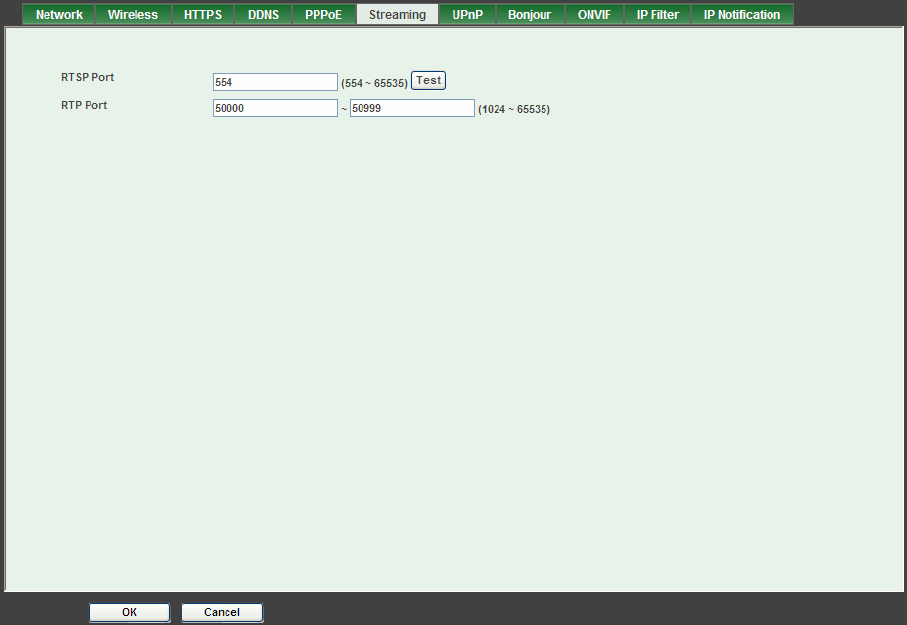
30
6.1.6 Streaming
RTSP is a streaming control protocol, and a starting point for negotiating transports such as RTP,
multicast and Unicast, and for negotiating codecs. RTSP can be considered a "remote control" for
controlling the media stream delivered by a media server. RTSP servers typically use RTP as the
protocol for the actual transport of audio/video data.
¾ RTSP Port: Choose the RTSP port. The RTSP protocol allows a connecting client to start a
video stream. Enter the RTSP port number to use. The default value is 554.
¾ RTP Port: Specify the range of transmission port number of video stream. The default range
is 50000 to 50999. The user can specify a number between 1024 and 65535.
6.1.7 UPnP
UPnP is short for Universal Plug and Play, which is a networking architecture that provides
compatibility among networking equipment, software, and peripherals. This camera is an UPnP
enabled camera. If your operating system is UPnP enabled, the camera will automatically be
detected and a new icon will be added to “My Network Places.” If you do not want to use the
UPnP functionality, it can be disabled.
In addition, this camera also provides UPnP IGD function for NAT traversal easily. Use NAT
traversal when your camera is located on an intranet (LAN) and you wish to make it available
from the other (WAN) side of a NAT router. With NAT traversal properly configured, all HTTP
traffic to an external HTTP port in the NAT router will be forwarded to the camera.


















